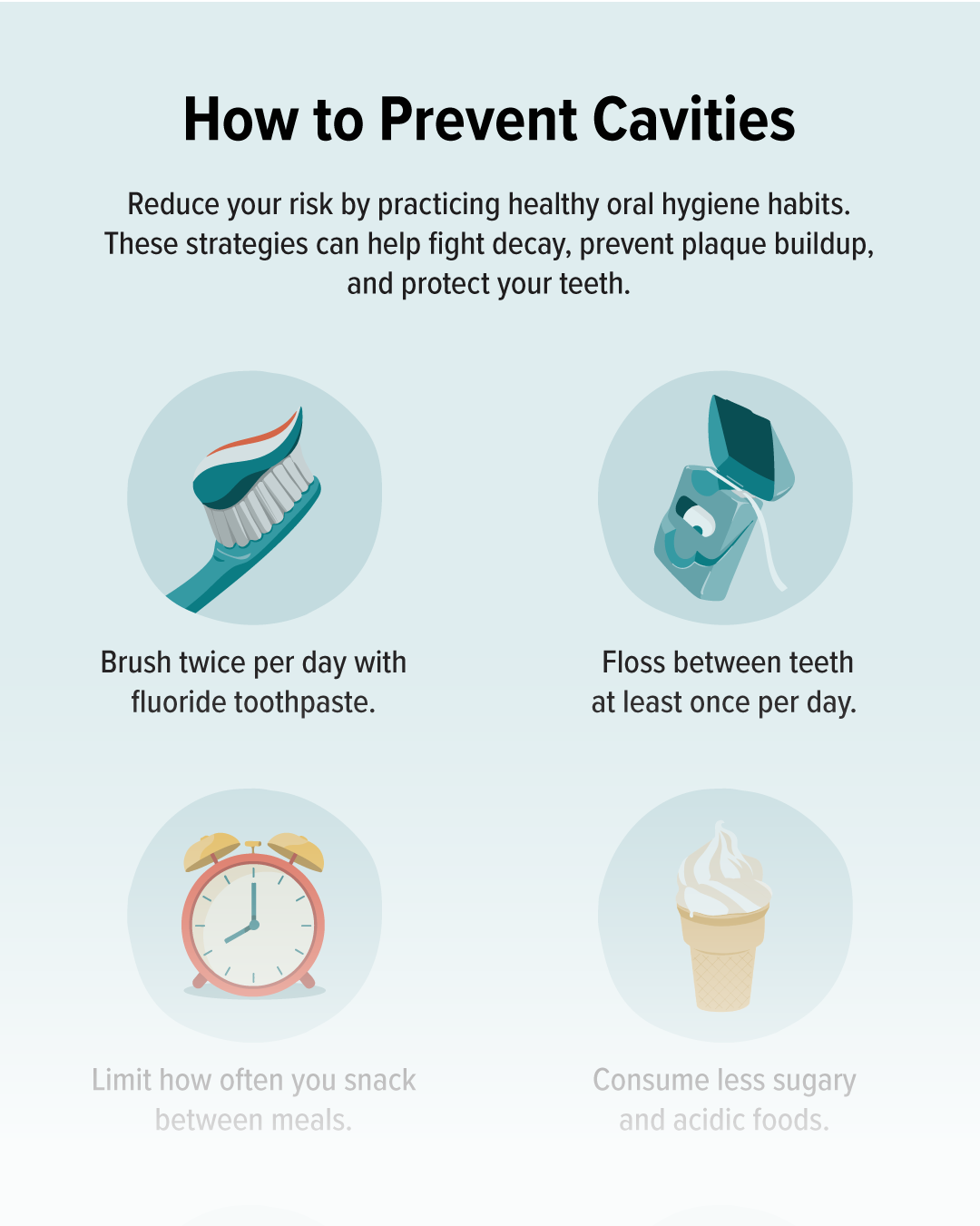|
| Welcome to our 3-day series on preventing cavities! Today, we’ll learn what cavities are, how they form, and what warning signs to watch for. |
| What are cavities? |
| Cavities are small holes that form in your teeth when decay damages the hard outer layer. They’re very common — half of all children ages 6 to 9 years have had at least one cavity, and 1 in 5 adults has an untreated cavity right now. Nearly 96% of adults over age 65 have had cavities in their lifetime.
|
| You have a higher chance of getting cavities if you:
|
| |
• |
eat or drink sugary things often |
|
| |
• |
don’t brush regularly with fluoride toothpaste |
|
|
|
|
|
|
|
| |
• |
don’t have regular access to dental care |
|
| |
• |
take medications that reduce saliva flow |
|
| How cavities form |
| Think of your mouth as an ongoing battle between two teams:
|
| |
💥 |
Team Decay: Bacteria in plaque use sugar from foods and drinks to make acid that attacks your teeth. |
|
| |
🛡 |
Team Protection: Minerals in your saliva and fluoride from toothpaste help rebuild your teeth after acid attacks. |
|
| When you eat or drink sugary things often, Team Decay gets too many chances to attack. Eventually, the enamel weakens and a cavity forms.
|
| Early warning signs |
| The first sign of potential cavity formation is often white spots on your teeth. This shows minerals are being lost, but at this early stage, the damage can still be reversed! |
| Other warning signs to watch for: |
| |
• |
pain when eating hot, cold, or sweet foods |
|
| |
• |
visible holes in your teeth |
|
| |
• |
brown, black, or white spots on teeth |
|
| |
• |
toothache or pain when biting down |
|
| If a cavity gets very deep, it can cause a serious infection that may spread to other parts of your body. |
 |
|
|
| When to see a dentist |
| Don’t wait for pain! Regular dental checkups can catch problems early when they’re easier to fix. White spots can often be reversed, but once a hole forms, you’ll need a dentist to repair it.
|
|
|
| Tomorrow, we’ll share simple daily habits that help prevent cavities.
|
